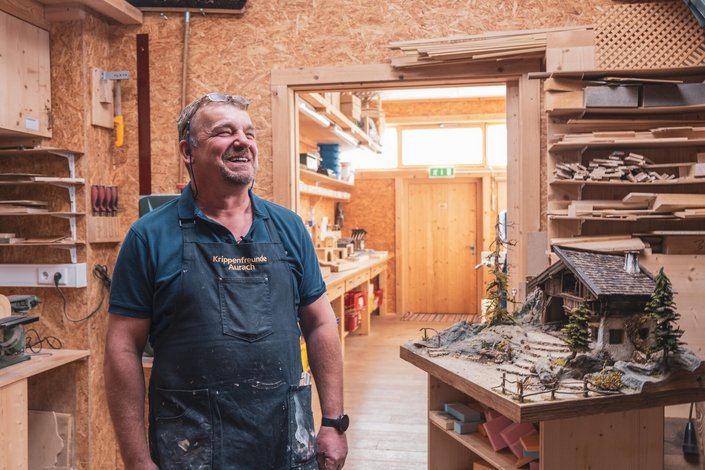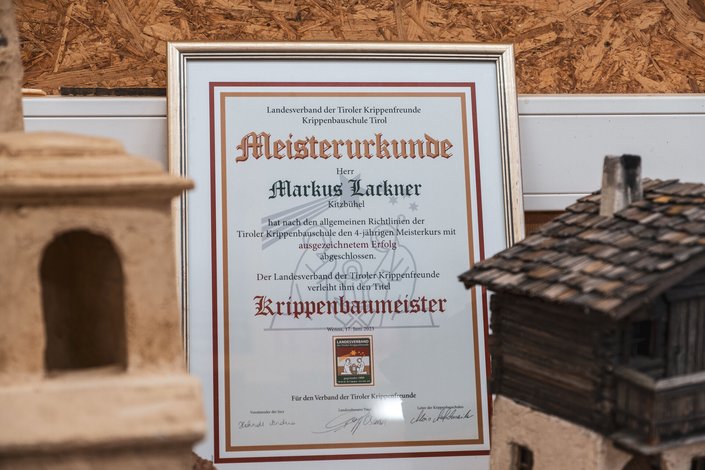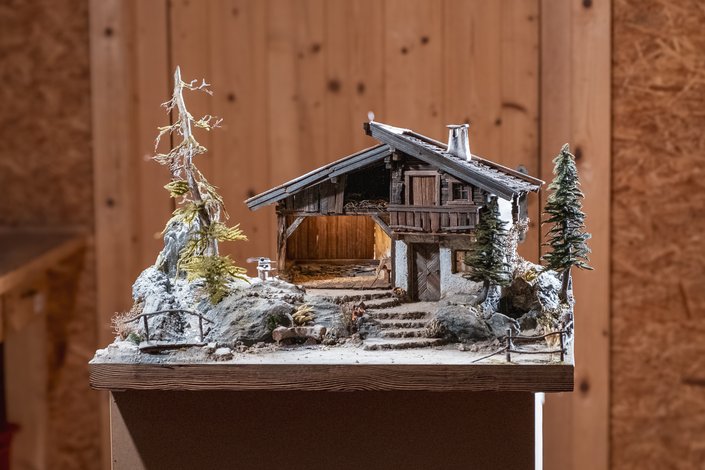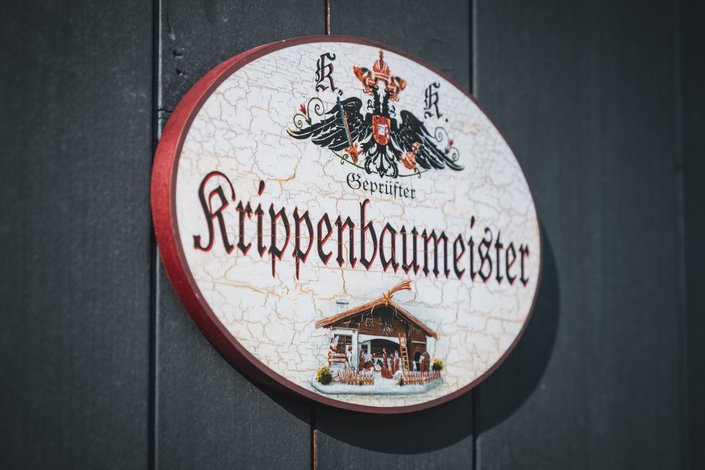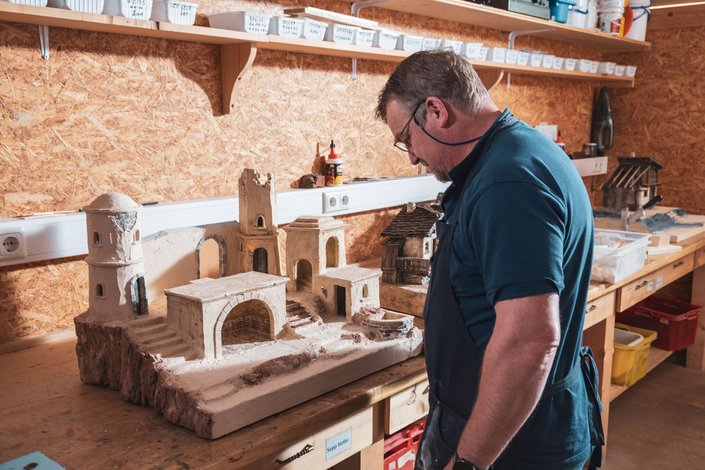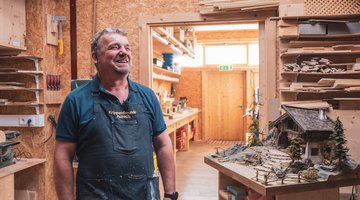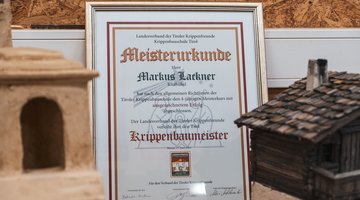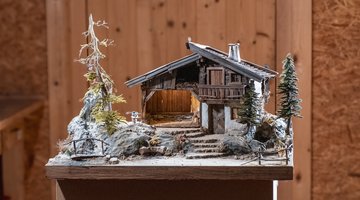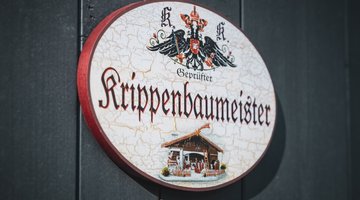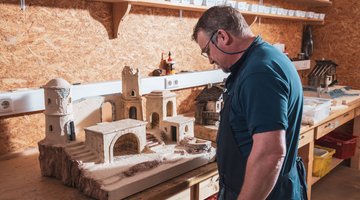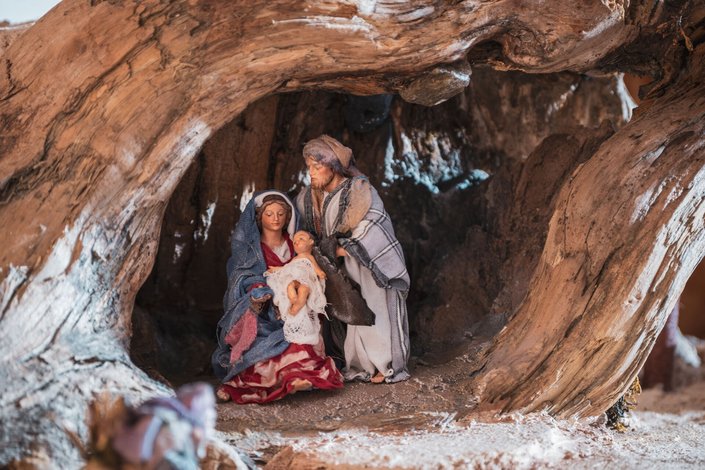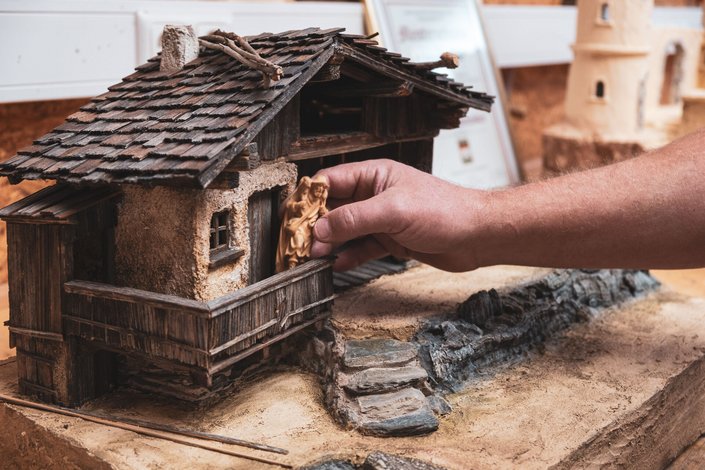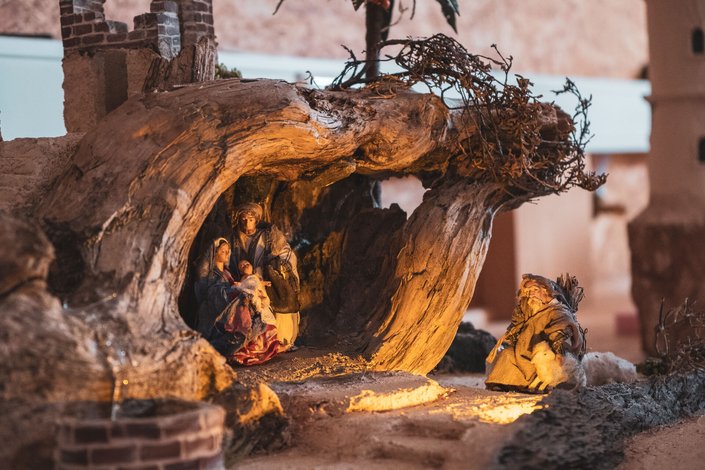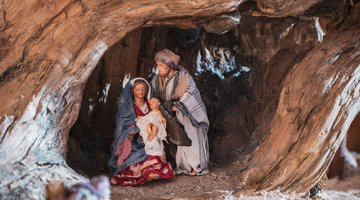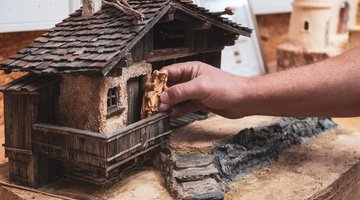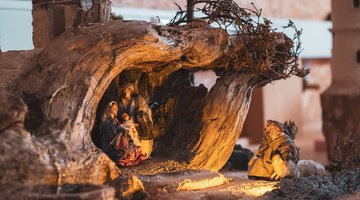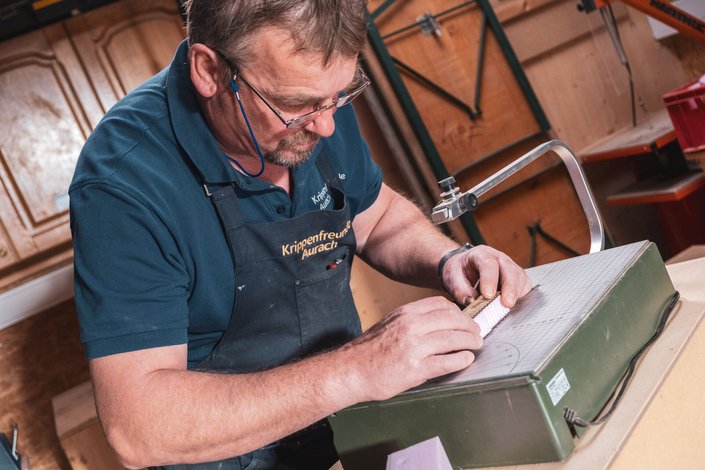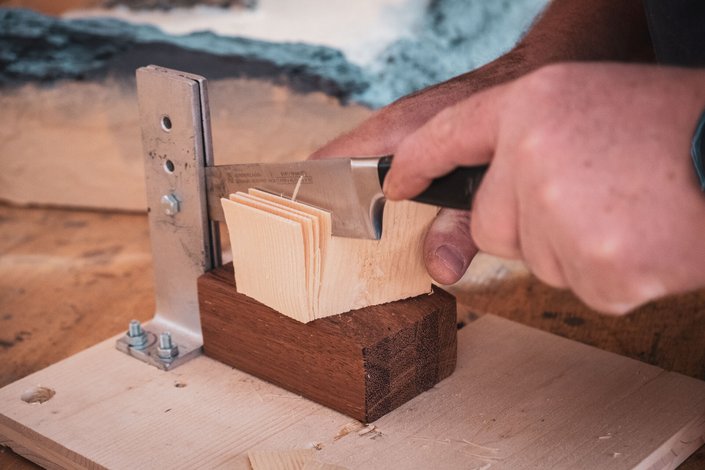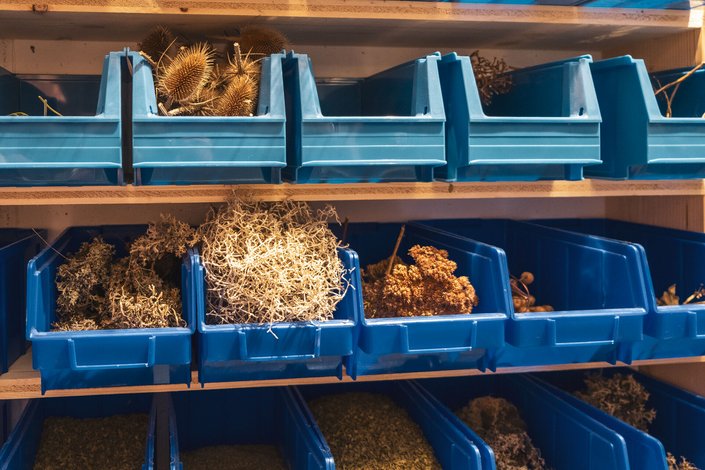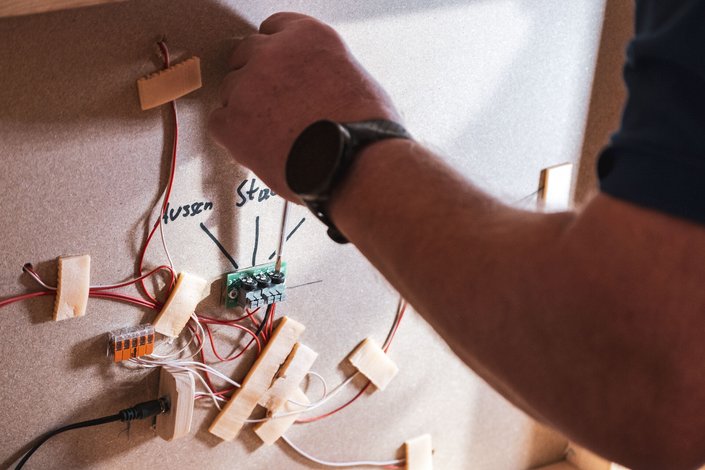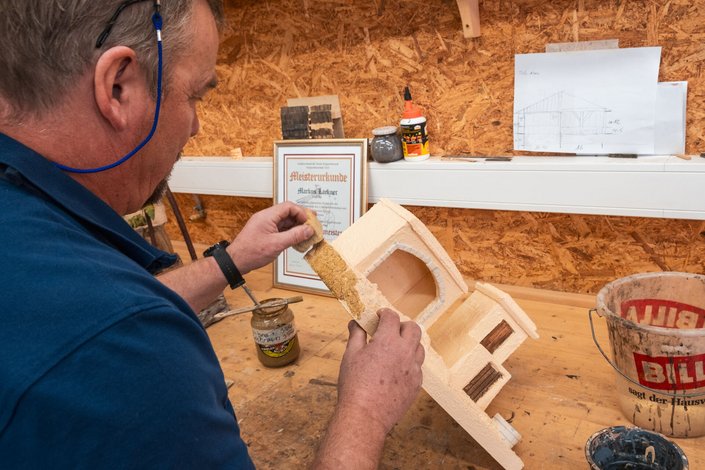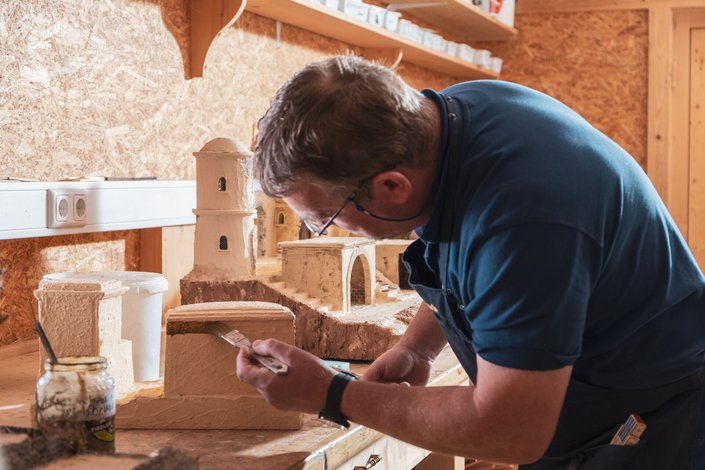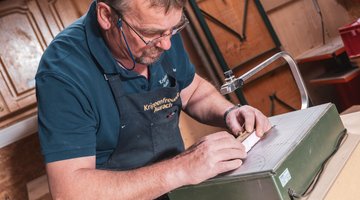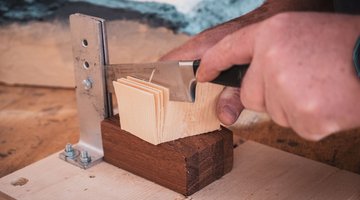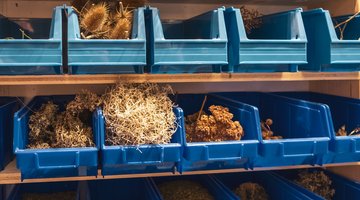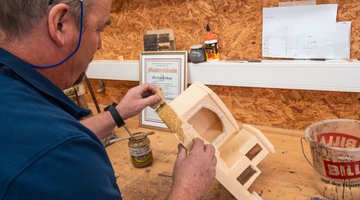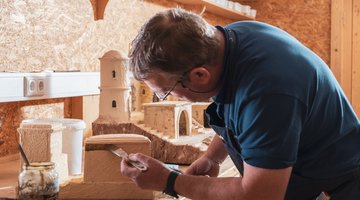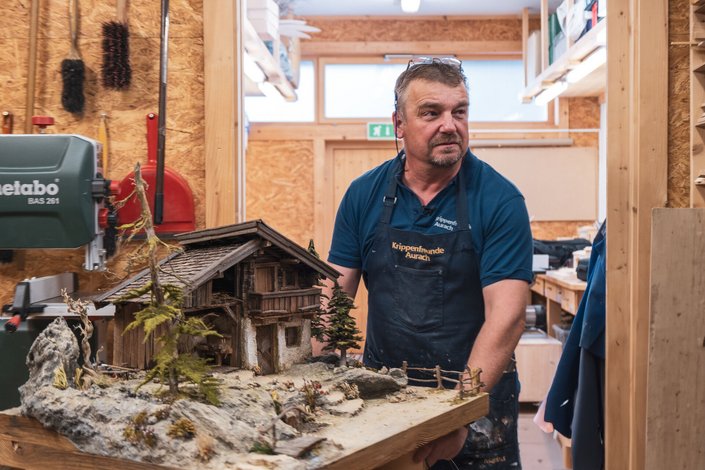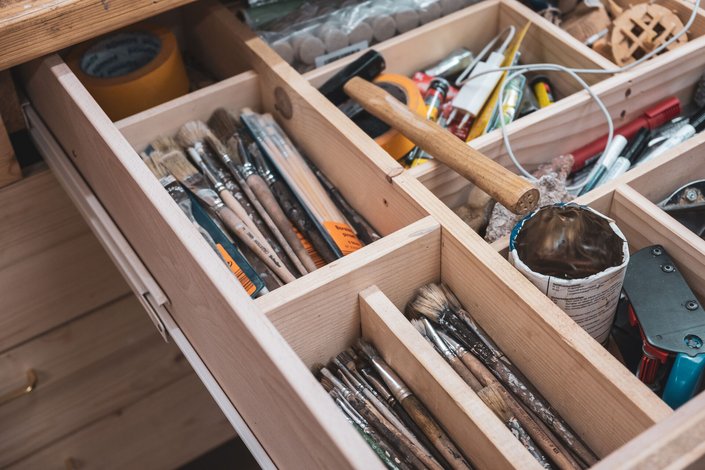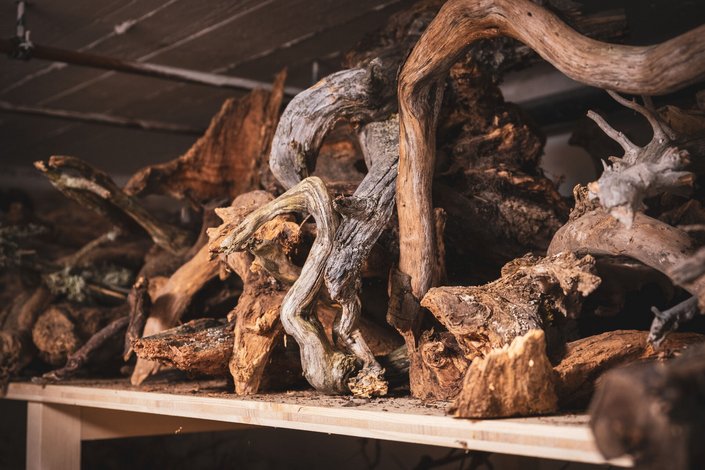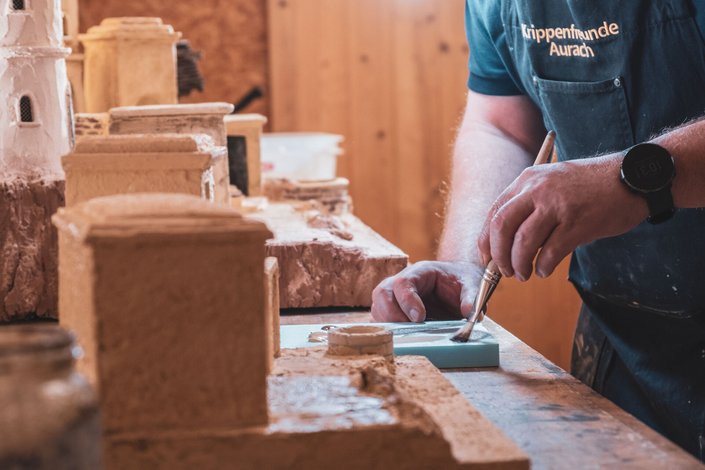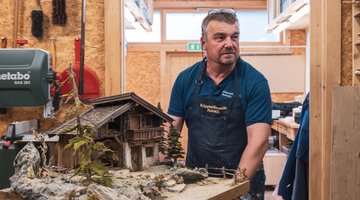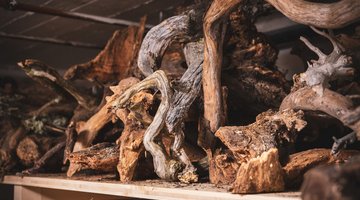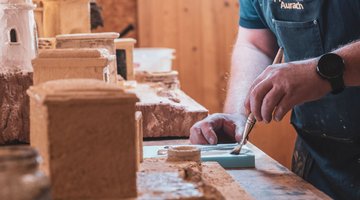With the Advent and Christmas season, a very old tradition comes alive anew every year: the Christmas nativity scene. Master cot builder Markus takes us into the workshop of the Nativity Scene Friends of Aurach and reveals everything there is to know about crib construction and the traditions surrounding nativity scenes.
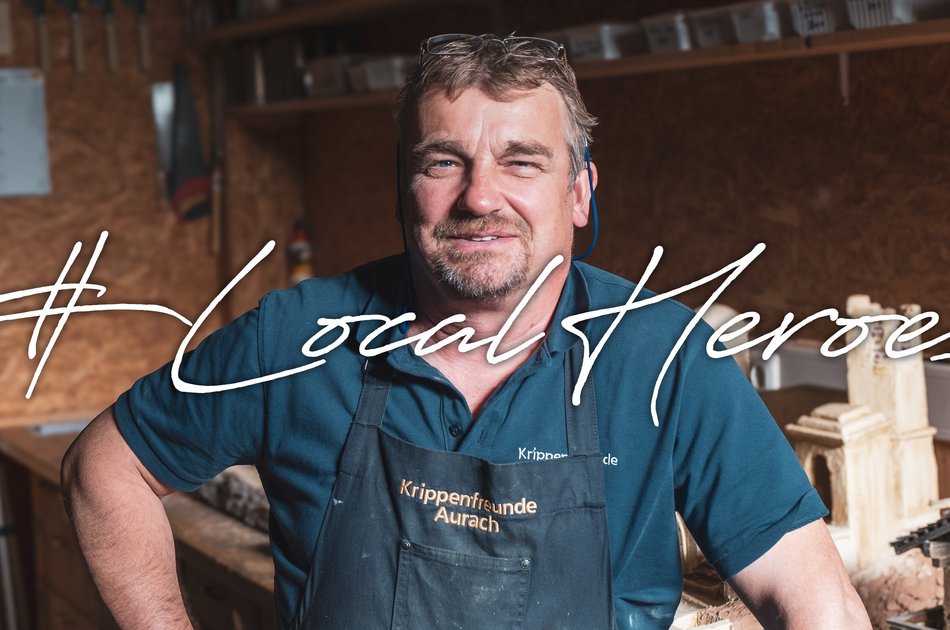
The Journey of a Master Cot Builder
Markus Lackner, an experienced carpenter and longtime driver for the municipality of Kitzbühel, discovered a new passion six years ago with the Nativity Scene Friends in Aurach.
The foundation of his passion for cot craftsmanship was laid when his sons asked him to build a nativity scene for them. So, Markus decided to take a course in Aurach, known for its antique wood nativity scenes. After a year, he finally secured a spot and began building his own antique wood nativity scene. After his second course, the chairman and cot-building teacher, Alois Aufschnaiter, asked him if he'd like to pursue the master's training.
The master's training lasted four years, during which Markus built three different cots - a simple Oriental one, a more intricate version, and, for the final stage, a rustic crib. In the fourth year, the cot he had to build was determined by drawing from 20 different specifications. For the master's exam, he had 48 hours to build an entire cot.
This year, I have a significant challenge because, for the first time, I am actually responsible for guiding and overseeing participants as a master crib builder during the course.
An Ancient Tradition
Nativity scenes, the artistic representation of the birth of Jesus in a stable in Bethlehem, are far more than mere decorations. They represent a cultural heritage, a symbol of Christmas tradition, and a way to narrate the story of the Holy Family.
The origin of the first nativity scene has been lost in the mists of time, but one of the oldest known Christmas cribs stands in the Sistine Chapel of the Church of S. Maria Maggiore in Rome. Crafted from alabaster in 1289, it is a valuable testament to the beginnings of this rich craft tradition. However, the first documented nativity scene is attributed to St. Francis of Assisi, who staged a remarkable celebration about 800 years ago. He used live animals like an ox and a donkey to bring the Christmas story to life. This performance laid the foundation for the development of crib artistry, which continues to touch the hearts of people worldwide.
Nativity scenes come in a variety of shapes and styles, ranging from traditionally rustic or oriental designs to innovative concepts like wall-mounted cribs, sponge cribs, or lantern cribs. The beauty of this tradition lies in its versatility - nativity scenes find their place in every conceivable space.
The Construction of a Nativity Scene
In a world full of hustle and speed, where time is often deemed a precious commodity, there's a tradition that steadfastly defies haste: the construction of a nativity scene. Behind this graceful craft lies an investment of approximately 70 to 90 hours, an act of dedication and patience.
A fascinating aspect of nativity scene crafting is the evolution of materials used over time. While in the past, fiberboards and stone were primary resources, today, Styrodur has established itself as the preferred material. The use of Styrodur allows for more precise cuts with a hot wire and significantly reduces the weight of the cribs without compromising on detail accuracy.
The painting of a crib, known as 'Fossn,' is an intricate process. The cribs are first primed, then antiquated, and finally brought to life with an array of colors.
Another fascinating aspect is the technique of 'Krippenmeters.' Here, the proportions of the crib are adjusted to the size of the figures to ensure a harmonious representation.
Then, it all comes together—the size of the shingles, the size of the figures, the railing size, or even the door height — all fitting together seamlessly.
The Nativity Scene Friends of Aurach
The Nativity Scene Friends of Aurach, a dedicated community of 75 members, are approaching a special milestone in 2025: 20 years filled with passion for crib craftsmanship. Their centerpiece is the annual crib-building course in the fall, held twice a week on Mondays and Thursdays from 7 to 10 p.m. The course kicks off at the beginning of September, aiming to be completed in time for the first Advent.
Every two years, the doors of the Aurach primary school open for an exhibition of the created cribs on the first Advent weekend. Here, not only are the artworks displayed, but they are also blessed—a moment of pride and community for the Nativity Scene Friends.
In addition to the fall course, the Nativity Scene Friends offer a wide range of activities throughout the year. From picture frame-making courses to specialized sessions like Maypole carving and a lantern crib course, there's something for everyone.
Registering for the courses offered by the Nativity Scene Friends of Aurach is straightforward: Visitors attending an exhibition can sign up on a list and will receive a phone call notification if one of the coveted 8 spots becomes available.
The Kitzbühel Formula
Alpine lifestyle and idyllic nature, rustic traditions and a modern way of life: Few cities combine these contrasts as skillfully as Kitzbühel. The sports capital of the Alps gained worldwide fame through the legendary Hahnenkamm races, but that is just one facet of the Kitzbühel legend. It is, above all, the incomparable charm of the region, with the towns of Kitzbühel, Reith, Aurach, and Jochberg, the excellent infrastructure with top-quality hotels and gastronomy, the multitude of sports opportunities, and the captivating landscape that make Kitzbühel so unique.
![[Translate to EN:] Krippenbaumeister Markus in der Werkstatt](https://www.kitzbuehel.com/fileadmin/_processed_/a/6/csm_Local_Hero_Markus_Lackner_Krippenbaumeister__c__Kitzbuehel_Tourismus__2__b310751b1a.jpg)
